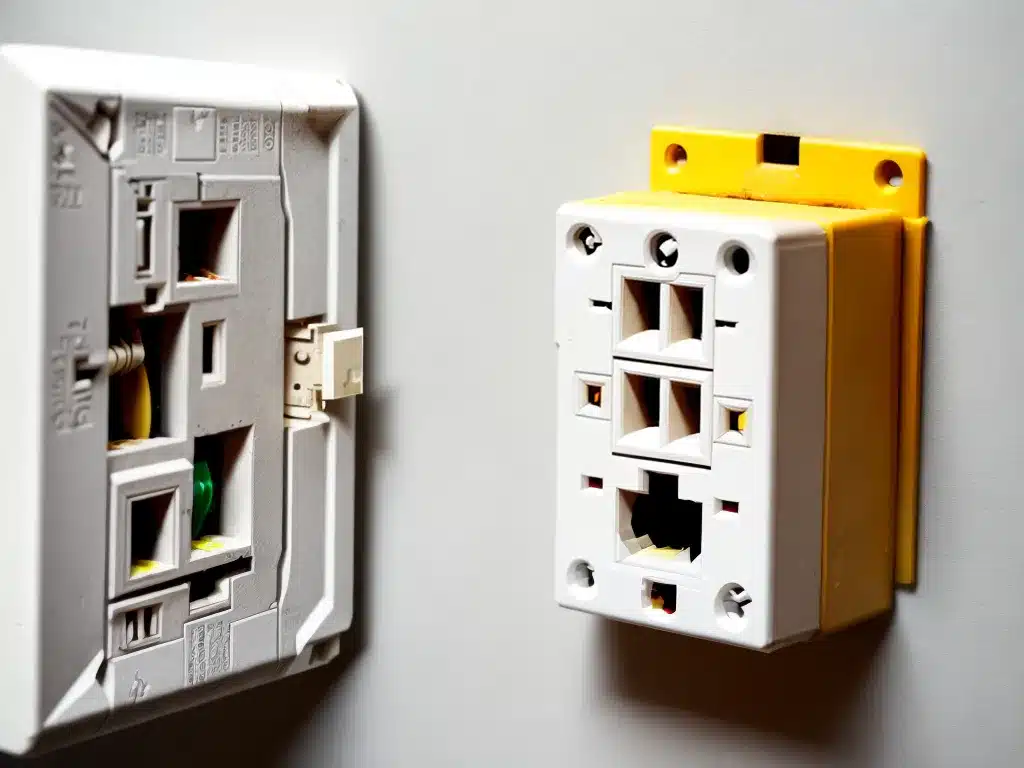
Electrical Socket Safety: The Overlooked Dangers of Faulty Wiring
Introduction
As a homeowner, I often take the electrical sockets in my house for granted. I plug in appliances without much thought, assuming the wiring is safe. However, faulty electrical wiring poses serious dangers that I cannot afford to ignore. In this article, I will discuss the hazards of faulty wiring, warning signs to look out for, and steps I can take to ensure my home’s electrical safety. Proper electrical maintenance is essential to protect my family from harm.
Shock and Electrocution Risks
Exposed wires or loose connections in sockets can lead to painful shocks or even electrocution. Here are some key risks:
- Faulty wiring can allow electricity to flow through the metal casing of a socket. If I touch the live case, I may get a dangerous shock.
- Poor connections at terminals can cause sparks, heat buildup, and fires. This poses a severe burn and fire hazard.
- Damaged sockets with cracked or broken plastic can expose internal wiring. If I plug an appliance into an unsafe socket, I risk electrocution.
- Outdated wiring that cannot handle modern appliance loads can overheat and melt, creating a shock risk.
These risks demonstrate why I must not take electrical safety lightly. One small wiring issue can have devastating consequences if not addressed.
Warning Signs of Electrical Problems
Staying vigilant for any of the following signs can help me detect socket issues before they turn dangerous:
- Burning smell or smoke coming from a socket indicates overheating wires. This signals an imminent fire hazard.
- Frequent circuit breaker trips when a high-wattage appliance is plugged in may indicate the wiring cannot handle the load.
- Tingling sensations when I touch a metal appliance plugged into a socket point to a grounding problem.
- Discolored or warm outlets signal heat buildup at faulty connections.
- Cracked or damaged sockets expose me to live wires inside.
- Flickering lights that dim sporadically may arise from loose or corroded wiring.
I should investigate these warning signs immediately rather than ignoring them. Electrical issues will only worsen over time if left unaddressed.
Inspecting My Home’s Wiring
To thoroughly evaluate my home’s electrical safety, I should:
- Check each socket individually, looking for any cracked/damaged sockets, exposed wires, or loose connections. I will carefully inspect areas like the kitchen and bathroom which see heavy appliance use.
- Note any hot outlets, as heat is a sign of connection problems or overloaded circuits. I will shut off affected circuits at the panel and contact an electrician.
- Test ground fault circuit interrupters (GFCIs) to ensure they trip when overloaded. I will press the “Test” button, which should cut power to the outlet.
- Consider an electrical inspection by a qualified professional every 5-10 years. The inspector can use specialized tools to identify hidden risks.
Routinely checking sockets takes just a few minutes but goes a long way in identifying potential hazards.
Improving Electrical Safety
Based on inspection findings, I may need to take measures like:
- Replacing any damaged sockets or wires to remove exposed live conductors. I will always turn off power at the panel before doing any electrical work.
- Upgrading overloaded circuits with thicker wiring that can handle modern appliance loads.
- Cleaning corroded connections to reduce heat buildup and improve conductivity.
- Labeling circuit breakers to quickly shut off problems.
- Installing AFCIs (arc-fault circuit interrupters) which detect dangerous sparks in wiring and cut power to prevent fires.
I should hire a licensed electrician for any major repairs to ensure the work meets building codes.
Practicing Ongoing Diligence
Electrical safety requires vigilance. I will get into these habits:
- Not overloading outlets with too many appliances, which can overwhelm the wiring. I will minimize use of extension cords and power strips.
- Plugging high-wattage appliances like refrigerators and air conditioners directly into wall outlets, not into strips.
- Installing surge protectors to guard against power spikes harming sockets.
- Regularly checking cords and plugs on lamps and appliances for damage. I will immediately discard any frayed cords.
- Keeping flammable materials away from sockets to prevent fire risks.
- I will also remain alert to any warning signs like flickering lights so I can quickly address problems.
With proper diligence, I can keep my home’s electrical system running safely for years to come. Faulty wiring poses serious risks, but preventative maintenance helps mitigate these hazards.
